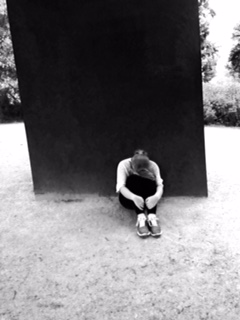Holocaust Memory in the Digital Mediascape

This monograph, forthcoming in December 2023 with Bloomsbury and written together with Meghan Lundrigan and Erica Fagen is the first of its kind to analyze the way social media has molded and shaped how people think, represent, and remember the Holocaust. Centred around the five most popular digital platforms in use today: Flickr, Instagram, YouTube, Twitter, and Facebook, it asks how social technology affects the way history is made and circulated online. Social media has become a place where memories of the Holocaust take shape through user-driven content shared in elaborately interconnected communication networks. Alongside curated exhibits, documentaries, and scholarly research, smartphone photos, short videos, and online texts act as windows into popular consciousness. They document how everyday people make sense of the crime of genocide, presenting unique challenges to historians. Does participatory media create a different understanding of genocide than more traditional forms of writing? How does expertise manifest in the digital public sphere? Do YouTube tourist videos and concentration camp selfies undermine the seriousness of the Holocaust and Holocaust Studies by extension? How does networked memory making affect the kinds of stories told? What evidence is drawn upon to make claims about the past and what mechanisms are used to ensure accuracy and counter hate? How have Holocaust museums responded to both the challenges and opportunities that Web 2.0 provides to broaden their mandate and involve more people in the conscious study of the past? This book provides answers to these questions by analyzing the way vernacular memory around the Holocaust and postwar reckoning and reconciliation is mobilized as well as contested in the digital sphere so as to better equip educational programmers, researchers, and students alike to understand how average individuals think about mid century crimes against humanity and their resonance in the postwar period.
The Queer Art of History
Prompted by critical interventions from Black feminism, queer of color critique, and trans studies, The Queer Art of History questions how the German queer and trans past has been drawn upon to make a series of claims about liberal democracy, the social contract, and the place of identity in rights-based discourses of experience, policy, and governance. I argue that in celebrating decriminalization and the attainment of key social rights, we have forgotten that not everyone benefited from these gains equally, and that there were in fact many different solidarities and struggles to conceptualize bodies, desire, community, politics, and family against the normative grain. Using kinship as an analytic category allows us to uncover that work, to seek out the fraught as well as productive ways in which Germans have confronted race, gender-nonconformity, and sexuality in social movements, art, and everyday life. A cautionary tale against a politics of remembering and claims making mobilized around siloed identities, The Queer Art of History tells the story of entanglements and alliances, the politics of desire, and good and bad kin, as queer and trans people tested out new possibilities for life, love, public and family life in the 20th century and 21st century. It was published in the Spring of 2023 with Duke University Press.
Populist Publics
This SSHRC supported project, Populist Publics: Memory, Populism, and Misinformation in the Canadian Social Mediascape, explores how populist narratives enter and circulate in public discourse on social platforms. Over the course of this project, one of our key objectives is to understand how harmful speech about immigration, multiculturalism, gender equality and LGBTQ+ rights has been weaponized by far-right groups and taken up as legitimate discourse. Our research examines how the deliberate distortion of the historical record is used to build an alternative collective memory as a core feature of populist strategies to undermine minority rights and cultures in liberal democracy. The research will identify the tactics, strategies, and repertoires among such groups and individuals through a multi-platform critical analysis of social media.
Erotic Photography and the Optics of Desire Before AIDs
The late 1960s and early 1970s saw the recognition of photography as a fine art. Galleries began exhibiting photos from new and emerging artists, cultural critics wrote seminal texts about the medium, while art historians debated its relative merits in newly minted journals like October. Art-school students like Robert Mapplethorpe moved away from mixed media and sculpture towards a full-time fascination with image making (Batchen, 1997), and the availability of film stock at affordable prices meant more and more people picked up the camera to document their everyday lives. Alongside these changes in art criticism and curatorial practice, expansive legal reforms were slowing taking root in many national parliaments, radically redefining the role of the state in regulating the sexual behavior of its citizens. Indeed, for a time this spirit of cultural flourishing and social reform even managed to transcend the Iron Curtain, and spread globally in fits and starts thanks to relaxed censorship, a renewed gay and lesbian print culture, and a growing international market in erotica. To date, no single study has attempted to analyze the connections between these changes in cultural criticism, artistic practice, and the so-called Sexual Revolution, the term given to this period of social reform and sexual liberalization. This project will analyze the ways in which the medium of photography helped articulate and give expression to changing visions of sexual expression in this period of greater visibility for queer-identified men and women. Tracing the migration of images and aesthetic styles between and among photographers in Germany, the United States, Israel, Japan, and Argentina, and employing a transnational frame, it will reveal the social as well as aesthetic networks and pathways that linked artists and social groups to this widening, visually mediated, public sphere. With a focus on erotic photography, this study will interrogate the role of image making in the negotiation of queer subjectivity to uncover the way male, female, and trans-identified persons used photography as a form of self-exploration and discovery in this period of intense social and legal change.